The Qutub Minar, an iconic symbol of India’s rich history and architectural splendor, stands tall in the heart of Delhi, India. Its towering presence, intricate carvings, and profound historical significance make it one of the most recognized landmarks in the world. Whether you’re a history enthusiast, an architecture lover, or simply someone in awe of magnificent structures, the Qutub Minar is a monument that never fails to impress.
The Beginnings: A Symbol of Victory and Faith
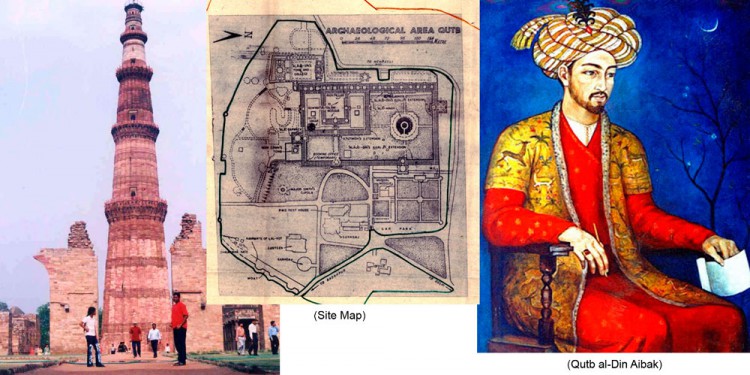
The Qutub Minar was built in the early 13th century by Qutb-ud-Din Aibak, the founder of the Delhi Sultanate. Qutb-ud-Din, who was a former slave turned ruler, laid the foundation of the monument in 1193 to commemorate his victory over the Rajputs of Delhi. This towering minaret was not just an architectural marvel but also a symbol of the triumph of Islam over the region’s Hindu rulers.
The construction of the Qutub Minar wasn’t a one-off affair. It was completed by his successor, Iltutmish, in the early 13th century, and later additions were made by Firoz Shah Tughlaq in the 14th century. As a result, the structure is a fascinating mix of different architectural styles, reflecting the evolving cultural and artistic influences of the time.
Architectural Masterpiece: A Blend of Cultures
At 73 meters (240 feet), the Qutub Minar is the tallest brick minaret in the world. But its height isn’t the only thing that stands out. The structure’s intricate carvings and ornamental designs reflect a blend of Persian, Turkish, and Indian architectural styles.
The base of the minaret features inscriptions in Arabic, including verses from the Quran. These inscriptions are beautifully carved in Kufic script, adding an element of religious reverence to the structure. The minaret’s design is cylindrical and tapers as it ascends, with five distinct stories, each separated by balconies. Each story has a different design, which gives the minaret its unique character. The first three stories are made of red sandstone, while the last two stories are made of marble and sandstone, signifying the changes in style over the years.
The Qutub Minar is not just an isolated monument; it is part of a larger complex that includes other historical structures. The Qutub Complex, as it is known, houses several other important landmarks, such as the Quwwat-ul-Islam Mosque, the Iron Pillar, and several tombs. The Quwwat-ul-Islam Mosque, which is the oldest mosque in India, was built using materials from destroyed Hindu temples, giving the entire area an intriguing historical significance.
The Iron Pillar: A Testament to Ancient Metallurgy
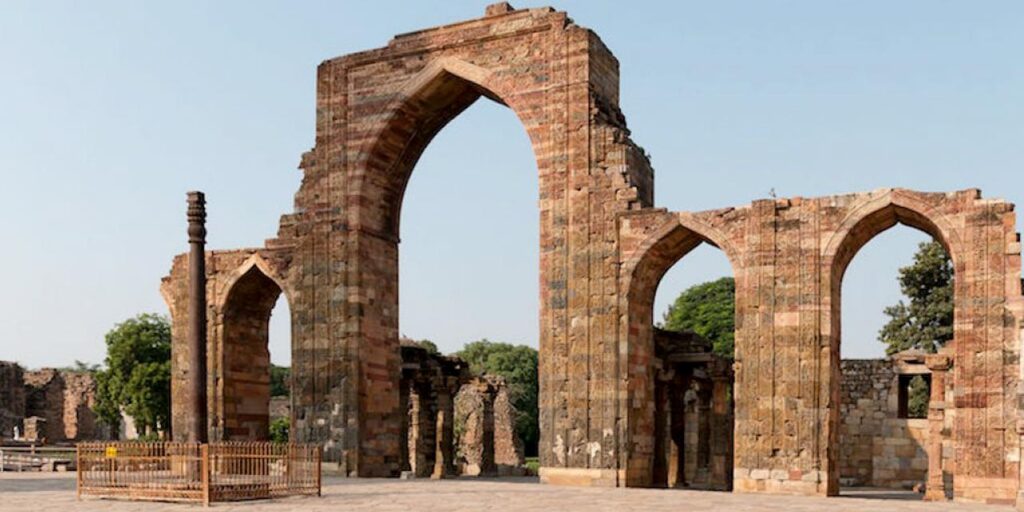
One of the most fascinating features of the Qutub Minar complex is the Iron Pillar. Standing at 7.2 meters (24 feet), this ancient iron structure is famous for its remarkable resistance to corrosion. Despite being over 1,600 years old, the Iron Pillar has withstood the ravages of time and weather, leaving scientists and historians in awe of the advanced metallurgical knowledge of the ancient Indians. The pillar has inscriptions in Sanskrit, which mention a King Chandra, thought to be a Gupta emperor, and it’s believed to have been erected in the 4th century.
The fact that this iron pillar has not rusted significantly over the centuries is still a mystery, leading many to believe that the ancient Indian metallurgists had perfected a process to prevent corrosion. This, in itself, is a testament to the advanced technological skills present in India long before the arrival of foreign invaders.
The Qutub Minar’s Inscriptions: Echoes of History
The Qutub Minar isn’t just an architectural wonder, it’s also a historical record. The inscriptions on the minaret and the surrounding buildings are a testament to the religious, political, and cultural changes that took place during the Sultanate period.
The inscriptions at the Qutub Minar provide details about its construction and the rulers who contributed to it. The first inscription, dating back to 1199, mentions Qutb-ud-Din Aibak’s victory over the Rajputs and his dedication to the expansion of Islam. Other inscriptions detail the subsequent rulers, such as Iltutmish and Firoz Shah Tughlaq, who made contributions to the structure. These inscriptions are valuable for historians, as they provide insight into the political and social landscape of the time.
Additionally, the Qutub Minar’s inscriptions are important for understanding the spread of Islam in the Indian subcontinent. The verses from the Quran and other religious texts inscribed on the walls of the minaret signify the religious motivations behind its construction and the spread of Islamic culture in India.
The Qutub Minar and Its Evolution
Over the centuries, the Qutub Minar has undergone several restorations and modifications. The most significant of these was during the reign of Firoz Shah Tughlaq, who added the two uppermost stories of the minaret. He also made various repairs after the minaret was struck by lightning, causing some damage. These repairs and additions reflect the changing political dynamics of the time, as different rulers made their contributions to the monument.
In modern times, the Qutub Minar has faced threats from both natural and human-made causes. Earthquakes, pollution, and vandalism have all taken a toll on the structure. In the 19th century, the British colonial government took steps to protect and restore the monument, ensuring its preservation for future generations. Today, the Qutub Minar is a UNESCO World Heritage Site, and efforts continue to maintain its integrity.
The Qutub Minar and Its Significance Today
The Qutub Minar is not just a relic of the past; it holds significant cultural, historical, and religious importance even today. It stands as a symbol of India’s long and complex history, representing the confluence of various cultures, religions, and traditions. The Qutub Minar is a reminder of the medieval period in Indian history, a time when the Delhi Sultanate ruled large parts of India, and the cultural fabric of the region was transformed.
The Qutub Minar also serves as a testament to the artistic and architectural achievements of medieval India. It’s a stunning example of Indo-Islamic architecture, combining Persian, Turkish, and Indian styles to create a monument that is both functional and aesthetically pleasing.
Moreover, the Qutub Minar has become an important part of India’s national identity. It’s featured in countless photographs, postcards, and travel brochures, attracting millions of visitors from around the world. For locals, it’s a place of pride and reverence, a reminder of their heritage and the grandeur of their past.
In addition to its architectural and historical significance, the Qutub Minar is also a popular tourist destination. The surrounding Qutub Complex is a favorite spot for history buffs and architecture enthusiasts, and the site is frequently visited by tourists from both India and abroad. The monument’s central location in Delhi makes it easily accessible, and it’s often included in the itineraries of those exploring the city’s rich history.
Mysteries and Legends Surrounding the Qutub Minar
As with most ancient monuments, the Qutub Minar is surrounded by various myths and legends. One of the most popular stories is that of the Qutub Minar being cursed. According to this legend, the minaret was built in such a way that if anyone tried to climb to the top, they would be cursed. Some even claim that a few unlucky souls who dared to reach the summit of the Qutub Minar met untimely deaths.
Another popular legend involves the famous poet and scholar, Amir Khusro, who is said to have been present at the completion of the Qutub Minar. Some versions of the story claim that he was so moved by the minaret’s beauty that he composed a poem in its honor. However, historians have no solid evidence to support this claim, and it remains part of the folklore surrounding the monument.
Conclusion: The Enduring Legacy of the Qutub Minar
The Qutub Minar is not just a marvel of architecture; it is a living testament to India’s diverse history, culture, and heritage. From its origins as a symbol of victory to its status as a UNESCO World Heritage Site, the Qutub Minar continues to capture the imagination of all who visit it. Its towering presence stands as a proud reminder of a bygone era, a time when empires rose and fell, and cultures blended to create something truly unique.
Today, the Qutub Minar remains one of Delhi’s most iconic landmarks, attracting millions of visitors every year. Its architectural grandeur, historical significance, and cultural importance make it an irreplaceable part of India’s heritage. As it stands tall against the skyline of modern-day Delhi, the Qutub Minar continues to tell the story of a nation’s past, a past that is still alive in the hearts of its people.
So, whether you are a history lover, an architecture enthusiast, or simply someone looking to experience the grandeur of India’s past, the Qutub Minar is a place that should be at the top of your list. With its timeless beauty and historical significance, it will undoubtedly continue to stand tall for generations to come, guarding the stories of India’s rich and diverse past.





























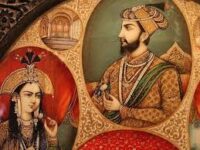










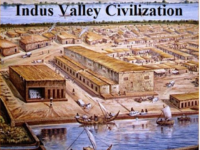






























































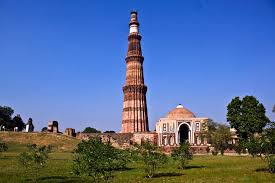
0 Comments